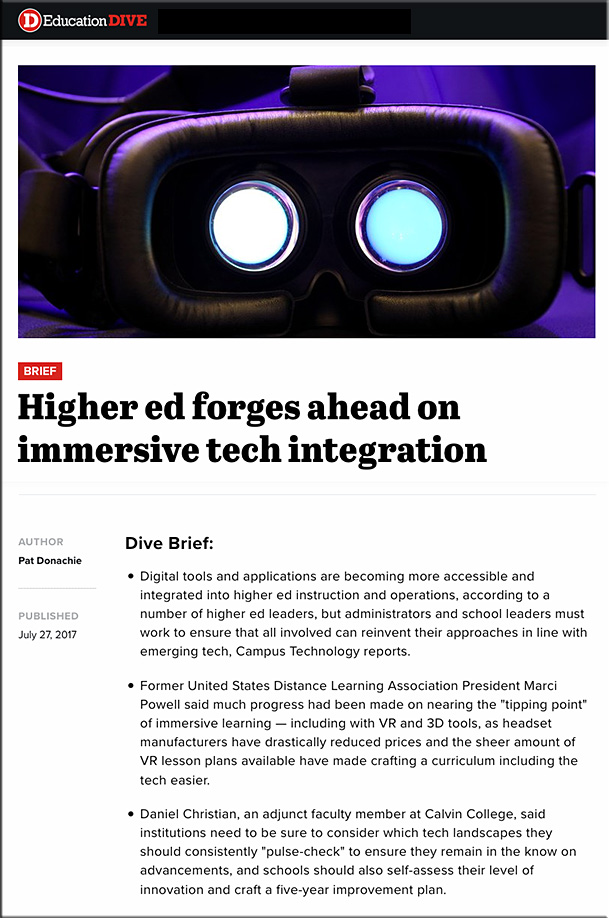VR Is the Fastest-Growing Skill for Online Freelancers — from bloomberg.com by Isabel Gottlieb
Workers who specialize in artificial intelligence also saw big jumps in demand for their expertise.
Excerpt:
Overall, tech-related skills accounted for nearly two-thirds of Upwork’s list of the 20 fastest-growing skills.
Also see:
How to Prepare Preschoolers for an Automated Economy — from nytimes.com by Claire Miller and Jess Bidgood
Excerpt
MEDFORD, Mass. — Amory Kahan, 7, wanted to know when it would be snack time. Harvey Borisy, 5, complained about a scrape on his elbow. And Declan Lewis, 8, was wondering why the two-wheeled wooden robot he was programming to do the Hokey Pokey wasn’t working. He sighed, “Forward, backward, and it stops.”
Declan tried it again, and this time the robot shook back and forth on the gray rug. “It did it!” he cried. Amanda Sullivan, a camp coordinator and a postdoctoral researcher in early childhood technology, smiled. “They’ve been debugging their Hokey Pokeys,” she said.
The children, at a summer camp last month run by the Developmental Technologies Research Group at Tufts University, were learning typical kid skills: building with blocks, taking turns, persevering through frustration. They were also, researchers say, learning the skills necessary to succeed in an automated economy.
Technological advances have rendered an increasing number of jobs obsolete in the last decade, and researchers say parts of most jobs will eventually be automated. What the labor market will look like when today’s young children are old enough to work is perhaps harder to predict than at any time in recent history. Jobs are likely to be very different, but we don’t know which will still exist, which will be done by machines and which new ones will be created.

















